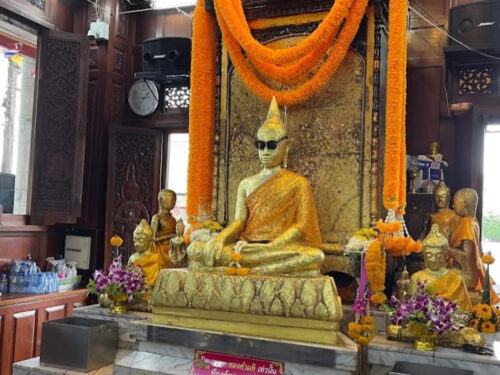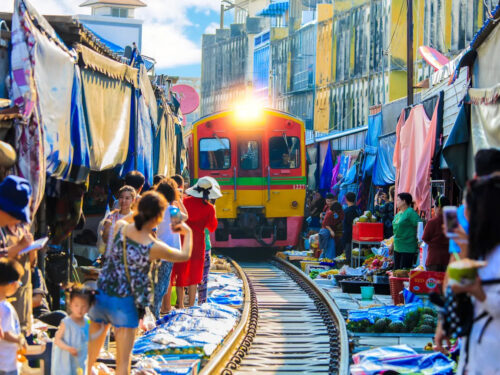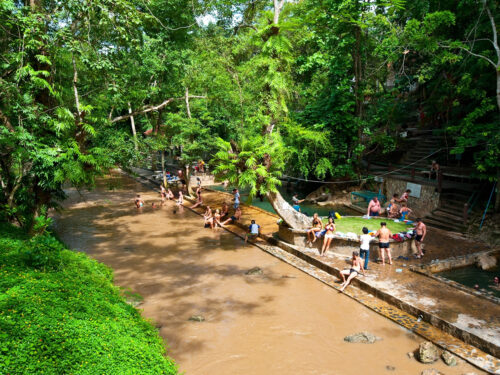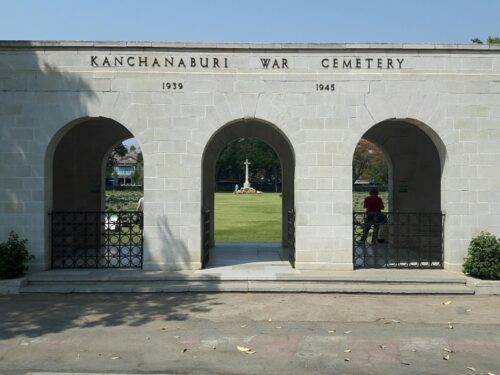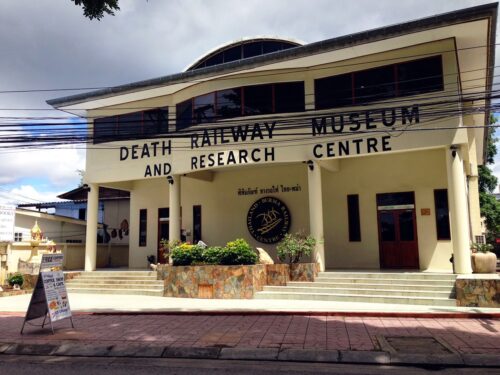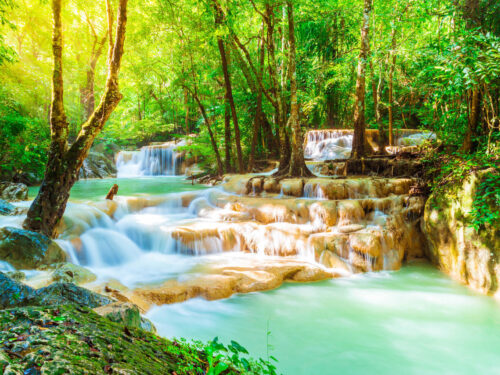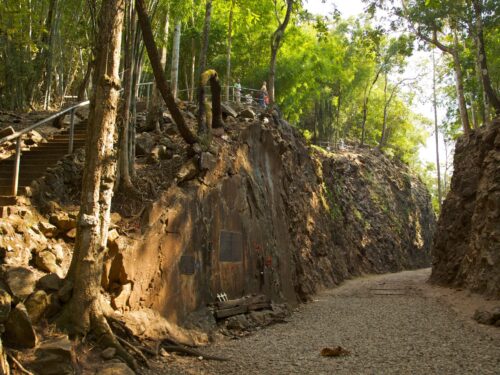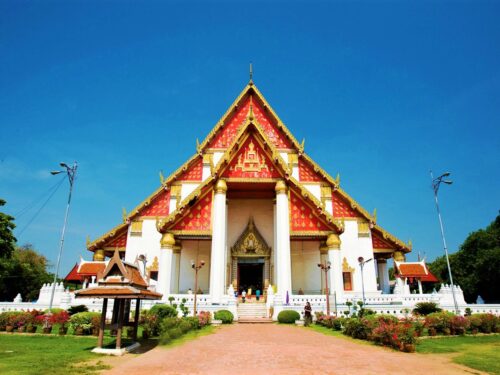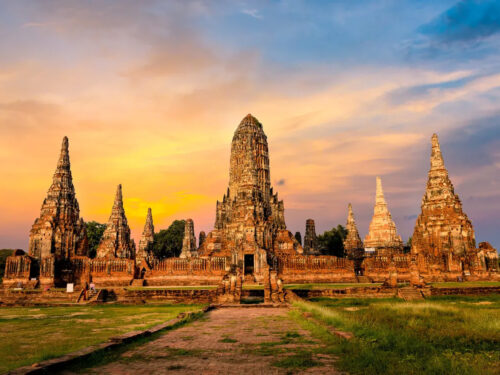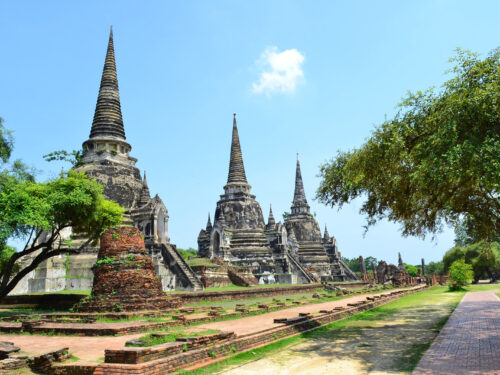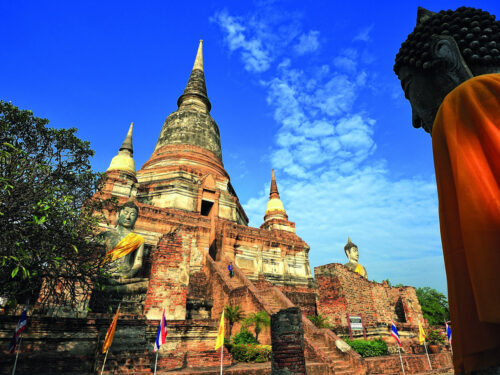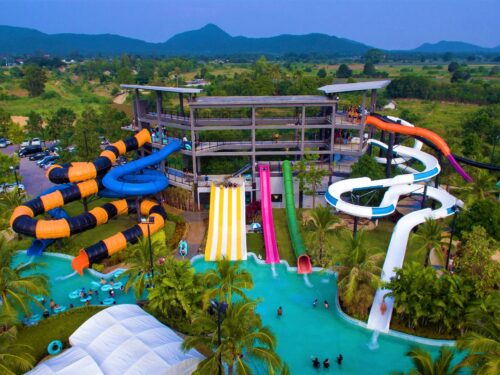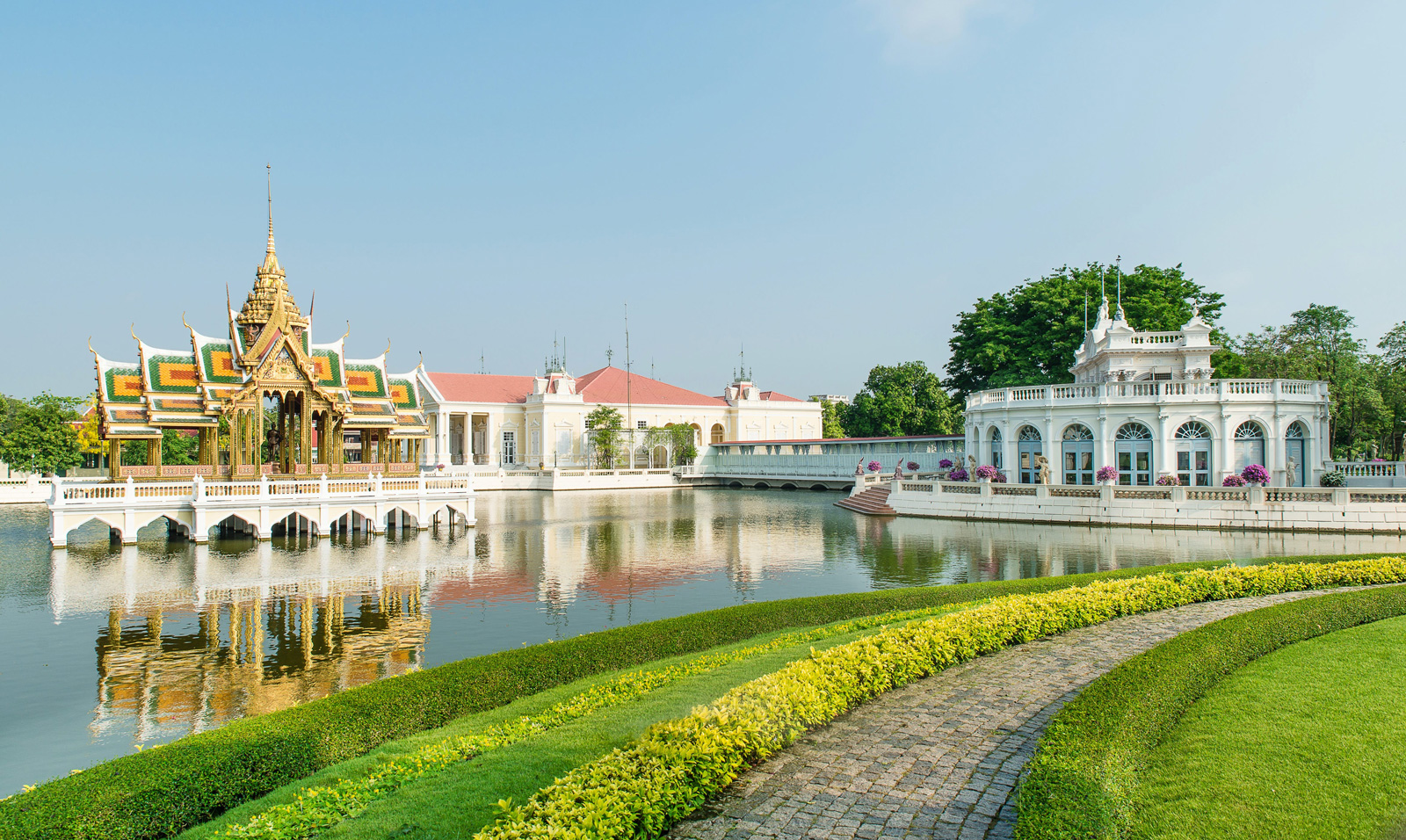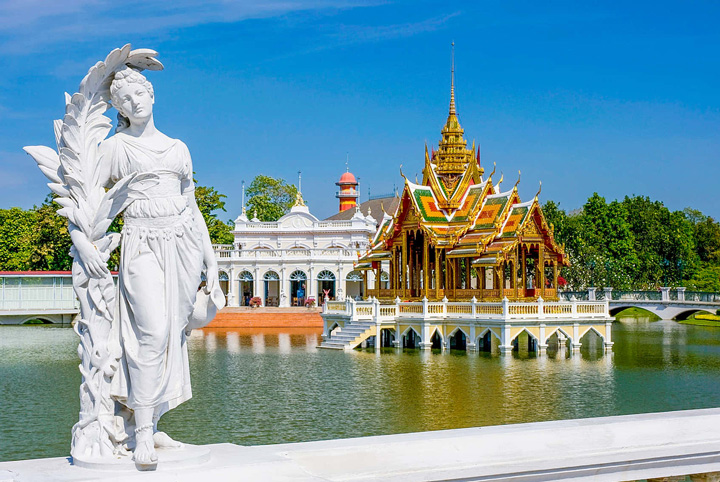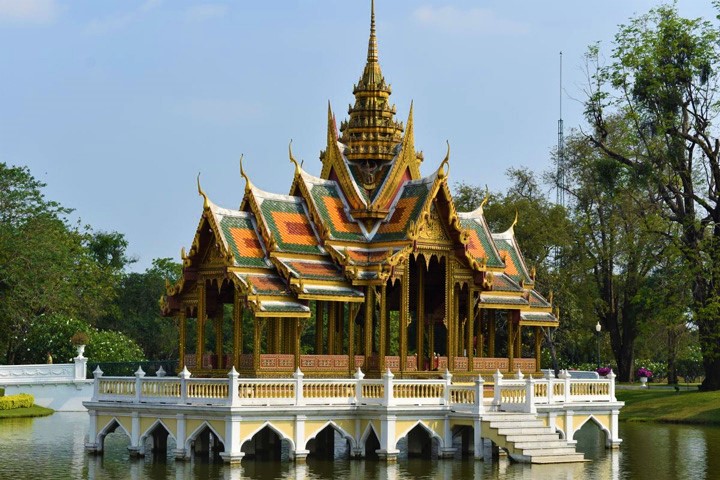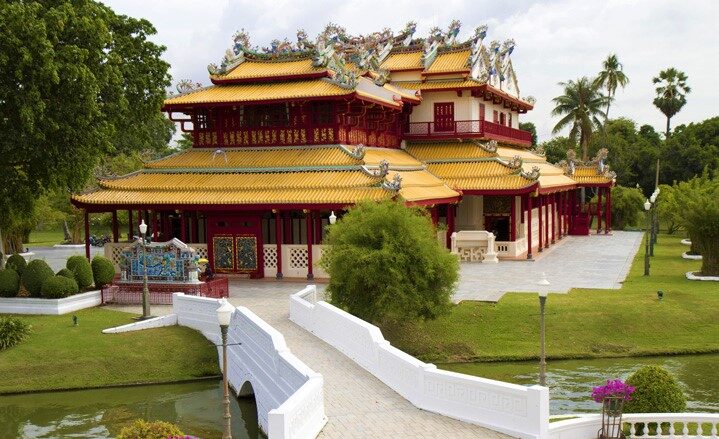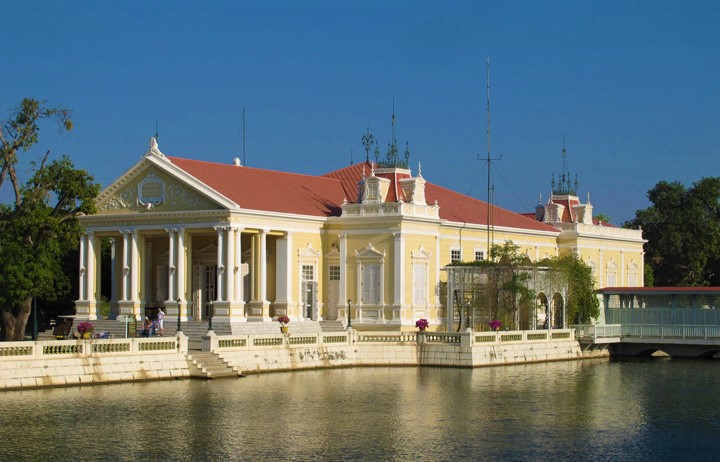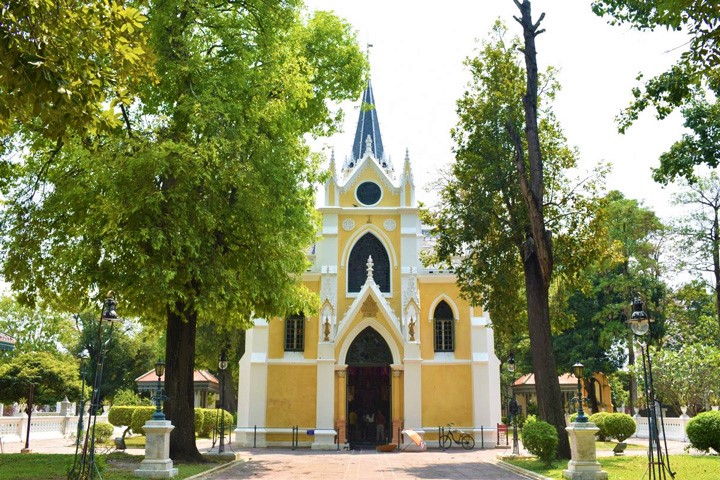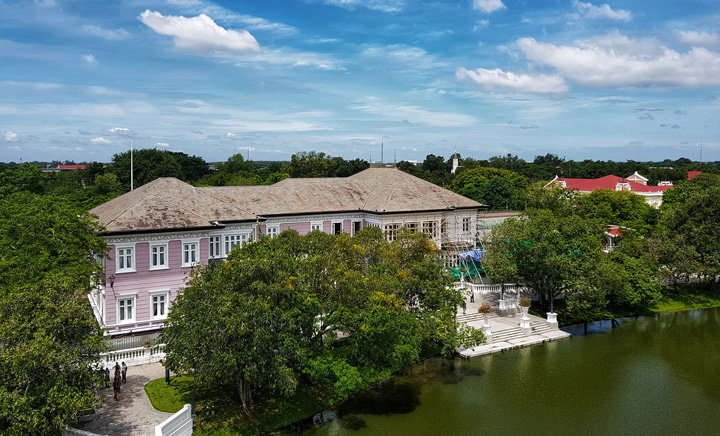Bang Pa-in Palace, The Summer Palace of Siam
Experience the lavish lifestyle of Thai monarchs by embarking on a visit to the captivating Bang Pa-in Palace.
Nestled on the scenic banks of the Chao Phraya River, this remarkable palace complex offers a glimpse into a bygone era. Located a mere 60 kilometers north of the bustling city of Bangkok, it boasts an opulent display of architectural grandeur and was once the cherished abode of Thai kings.
History of Bang Pa-in Palace
The original Bang Pa-In Palace was constructed by King Prasat Thong of Ayutthaya in the early 17th century. However, when Ayutthaya fell to the Burmese in 1767, the palace was left abandoned for nearly a hundred years.
It was during the reign of King Mongkut (Rama IV) in the 1850s that efforts were made to rebuild parts of Bang Pa-In Palace. Substantial reconstruction took place during this time, and many of the buildings that comprise the palace complex today were constructed in the late 19th century.
Since its reconstruction, Bang Pa-In Palace has continued to serve as a place of significance for the Thai royal family. It has been used for various purposes, including as a summer retreat and a venue for royal ceremonies and functions.
Today, the palace remains in use by the royal family, maintaining its connection to the country’s regal heritage and traditions.
Versailles-like atmosphere
Bang Pa-in Palace boasts a variety of remarkable buildings, each constructed in distinct architectural styles, including classical Thai, Chinese, and European design. The expansive landscaped park surrounding the palace is meticulously cared for, while the neoclassical European structures exude an air reminiscent of the grandeur of Versailles. This picturesque and highly photogenic destination offers ample opportunities to capture stunning photographs, making it a perfect place to spend a full day immersed in its beauty.
Bang Pa-in Palace Highlights
Thai-style Pavilion
One of the most renowned attractions within the palace grounds is the Aisawan Thiphya-Art Sala, a charming Thai-style pavilion situated on a small lake. Often referred to as “The divine seat of personal freedom” this pavilion holds great significance. It was constructed during the reign of King Chulalongkorn (Rama V) in the traditional Thai architectural style and houses a statue of the revered King.
Notably, this structure is the only building within the palace complex built in the traditional Thai architectural style. The Royal Sala is actually a replica of the Phra Thinang Aphonphimok Pavilion located in the Grand Palace in Bangkok, which was initially built by King Rama IV.
The Aisawan Thiphya-Art Sala serves as a testament to the deep cultural roots and rich heritage of Thai architecture. Its presence within Bang Pa-In Palace adds to the diversity and historical significance of the complex, providing visitors with a glimpse into the traditional Thai architectural styles and their royal connections.
Heavenly Light
Standing out with its distinctive architectural style is the Phra Thinang Wehart Chamrun, aptly named “Heavenly Light.” This two-story mansion showcases an exquisite Chinese design and holds a significant historical value. The mansion was presented as a gift to King Chulalongkorn in 1889 by the Chinese.
The first floor of Phra Thinang Wehart Chamrun houses a throne room adorned with Chinese influences, featuring a beautifully crafted Chinese-style throne. As visitors ascend to the second floor, they will discover a shrine dedicated to King Mongkut and King Chulalongkorn, paying homage to the esteemed monarchs of Thailand’s past.
Excellent and Shining Heavenly Abode
The Phra Thinang Warophat Phiman, also known as the “Excellent and Shining Heavenly Abode,” is a single-story royal mansion designed in the neoclassical style. This magnificent building boasts a distinctly European appearance and serves as the throne hall. Inside, the mansion is adorned with exquisite paintings and lavish decorations, exuding an aristocratic atmosphere. Remarkably, the mansion is still utilized as private quarters for the Royal Family.
Sages Lookout, Observatory Tower
Constructed in 1881 by King Rama V, the Ho Withun Tasana, also known as the “Sages Lookout,” served as an observation tower. This striking structure bears a resemblance to a lighthouse, painted in vibrant red and yellow hues to provide a vantage point for surveying the surrounding area.
Wat Niwet prawat
The Wat Niwet Thamprawat is a Buddhist temple with a European Gothic-style cathedral appearance, complete with colorful stained-glass windows. It was built by King Chulalongkorn (Rama V), who was the first Siamese king to travel to Europe. To reach the temple, visitors can take a cable car across the river.
King Chulalongkorn’s Residence, Garden of the Secured Land
The “Phra Thinang Uthayan Phumisathian,” also referred to as the ‘Garden of the Secured Land,’ was King Chulalongkorn’s cherished dwelling during his visits to Ayutthaya. Originally constructed in 1877 as a wooden structure, it tragically fell victim to a fire in 1938. However, it was reconstructed during the reign of King Rama IX.
How to get there
The palace complex is situated approximately 20km (13 miles) south of the main Ayutthaya Historical Park. If you’re planning a day trip from Bangkok, many tours include a brief stop at Bang Pa-In Palace. For independent travelers, you can opt to take the train from either Bangkok or Ayutthaya to Bang Pa-In. The journey from Ayutthaya takes about 15 minutes on an ordinary train, with a fare of only 3 Baht. Once you arrive at Bang Pa-In train station, it’s a convenient 25-minute walk to reach the palace. Alternatively, you can hire a taxi from Bangkok or take a tuk-tuk from Ayutthaya to reach the palace.
Opening Hours
The Summer Palace welcomes visitors daily from 8:30 am to 4 pm. However, please note that certain buildings within the complex are closed to the public.
Entrance fee
The admission fees at the ticket booth are as follows (in Thai Baht):
- Adult: 100 Baht
- Child: 100 Baht
For those who prefer a more convenient mode of transportation, golf carts can be rented. The rental fee is 450 Baht for the first hour and an additional 100 Baht for each subsequent hour.
Dress code
As the Bang Pa-in Palace is a royal residence, it is important to dress appropriately when visiting. At the entrance, you have the option to rent clothing for a nominal fee. The fee will be refunded upon returning the rented attire.
Bang Pa-In Palace offers a captivating journey through Thai history, showcasing the diverse architectural influences that have shaped the country’s culture. Its picturesque setting, remarkable buildings, and serene atmosphere make it a must-visit destination for those exploring Ayutthaya and its historical treasures.
Tourists’ Reviews
See what others are saying about Bang Pa-in Palace on TripAdvisor
G07
Lovely well tended palace and grounds.
Mar 2023 • Couples
Lovely Palace and grounds. Well worth a visit. You can hire a golf buggy to get around but it would be easy to walk around it. Toilets, shop and cafe.
luv4phood
Spend more time here if you can
Feb 2023
We visited the Summer Palace as part of a small group tour from Bangkok. Our tour guide walked with us for a short while providing some information about the palace. Then we were allowed just a little bit of time to explore on our own. Our tour also included the many temples in the area. It would have been nice to have just a little bit more time at this location. The grounds are lovely and there is shade.
We visited the temples in the afternoon, which was very hot because there was very little shade. It may have been a good idea to visit the temples in the morning and the summer palace in the afternoon.
Other attractions
